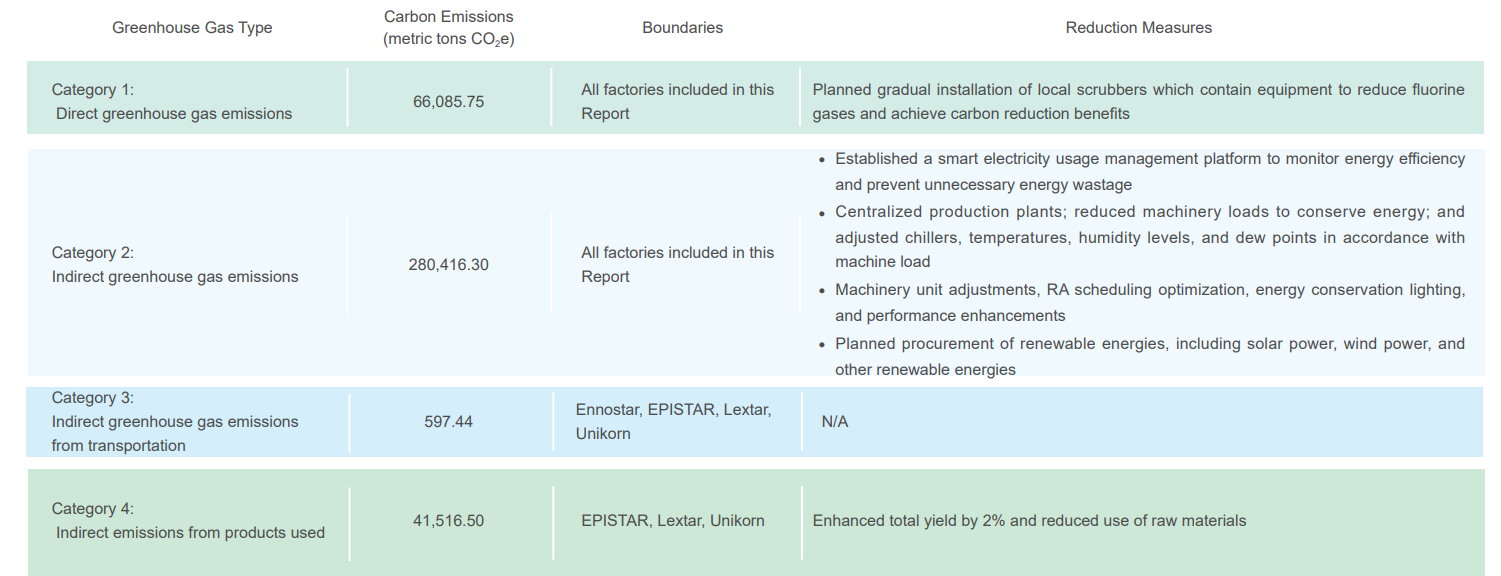Commit to low-carbon transformations to
become a green practitioner and realize environmental sustainability
We began implementing the ISO 14064-1 in 2021, gradually conducted greenhouse gas inventories for all subsidiaries and factories, and disclosed emissions information in a transparent manner through external verification. We further measured and managed greenhouse gas emissions in 2022 to reduce operational impacts from climate change, and we continue to establish renewable energy systems and disclose greenhouse gas emissions.
The Group’s greenhouse gas emissions include direct emissions and indirect emissions associated with energy. Sources of direct emissions include gases used during production processes (PFCs, N2O, CH4, CO2); equipment for preventing volatile organic compound pollution; emergency generators; natural gas, liquefied petroleum gas, petroleum, diesel, and other fuels used by other facilities; and fugitive emissions from septic tanks, fire drills, and associated equipment. Indirect emissions associated with energy mainly stem from purchased electricity. Other emissions stem from product and material transportation, supplier production, employee travel, waste treatment, and employee commutes.
The Group’s total greenhouse gas emissions for 2022 amounted to 3,88,615.99 metric tons CO2e, and mainly included indirect emissions from electricity use, which accounted for 72.16% of all emissions, as well as direct emissions which accounted for 17.01% of all emissions. Ennostar worked to reduce scope 2 emissions in 2022, and is actively conducting ISO14064-1 inventories to better understand emission scopes which can be used as a basis for setting reduction targets.
Greenhouse Gas Emissions and Management

Note 1: EPISTAR and Lextar used the GWP value in the United Nations Intergovernmental Panel on Climate Change Fourth Assessment Report (AR4) released in 2007.
Note 2: Ennostar, Episky, Epicrystal, and Can Yang used the GWP value in the United Nations Intergovernmental Panel on Climate Change Sixth Assessment Report (AR6) released in 2022.